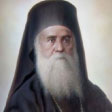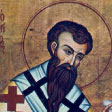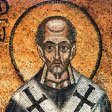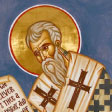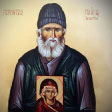First Time? Welcome!
Here is a detailed guide to help Christians from other denominations understand and appreciate the Divine Liturgy of St. John Chrysostom, one of the most celebrated liturgical services in the Orthodox Church. This guide follows the flow of the service, explaining key elements and their significance.
The Divine Liturgy is not just a service but an experience of the Kingdom of God. It reflects the timeless worship of heaven, drawing us into communion with Christ and His Church. For those experiencing it for the first time, let it be a moment of awe and discovery as you encounter the sacred mysteries.
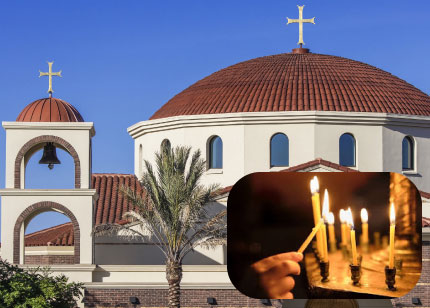
Entering The Church
Orthodox churches are designed to reflect heaven on earth. Icons, incense, candles, and chanting create a sacred space where the divine meets the earthly. Visitors often light candles, venerate icons, and pray before finding a place to stand or sit. The act of standing reflects reverence and participation.
Learn more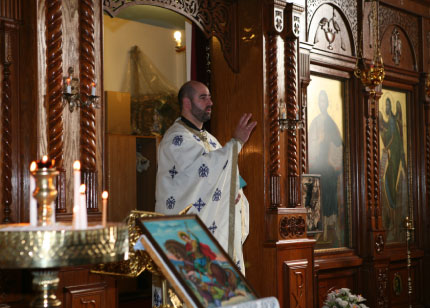
The Beginning: The Opening Blessing
"Blessed is the Kingdom...": The priest begins the liturgy by invoking the Kingdom of the Holy Trinity. This sets the tone: we are entering God's eternal presence.
Litany of Peace: The deacon or priest leads a series of petitions for peace, salvation, and the needs of the Church and the world. This represents the Church's mission to intercede for all creation.
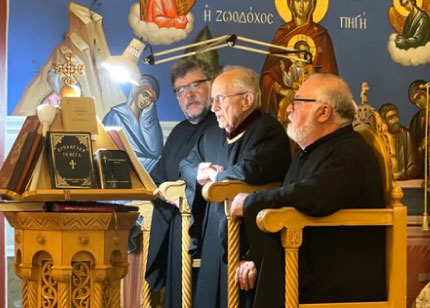
Antiphons and Hymns: Entering Worship
Antiphons: Psalms and refrains are sung, often interspersed with references to Christ or the Theotokos (Mary, Mother of God). These reflect joy and thanksgiving as we prepare our hearts for worship.
The Little Entrance: The priest or deacon processes with the Gospel book, symbolizing Christ's coming into the world. It reminds us that Jesus is central to everything in the Church.
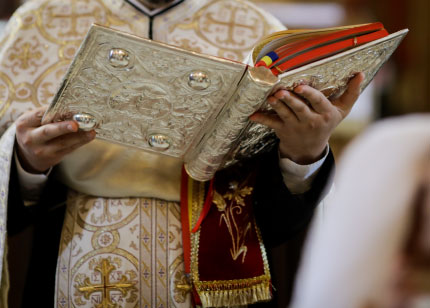
Hymns and Readings: Hearing the Word of God
Troparia and Kontakia: These are short hymns highlighting the theme of the day (e.g., a feast or saint being commemorated). They connect us to the Church's liturgical calendar.
Trisagion Hymn: "Holy God, Holy Mighty, Holy Immortal, have mercy on us" is sung. This ancient hymn glorifies the holiness of God.
Epistle Reading: A reading from the New Testament letters, followed by "Alleluia," signaling joy at the coming of Christ.
Gospel Reading: The high point of this section, as the priest reads from the Gospels. Everyone stands to honor Christ’s words.
Learn more
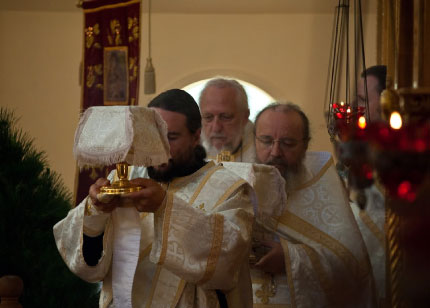
The Great Entrance: Offering Our Gifts
The Great Entrance: The priest processes with the bread and wine, symbolizing Christ’s sacrifice and burial. This is a solemn and reverent moment.
"May the Lord God remember...": The priest prays for the Church, its leaders, and all people. This reminds us that the Liturgy is for the whole world.
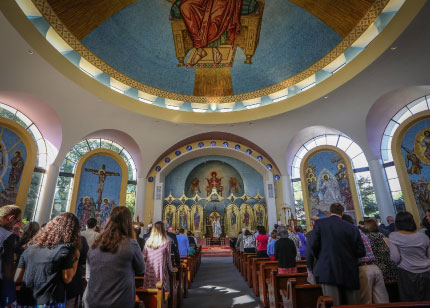
The Creed: Affirming Faith
Nicene Creed: The congregation recites this ancient statement of faith, affirming core Christian beliefs about the Trinity, Christ's incarnation, and the Church. This unites us with Orthodox Christians throughout history.
Learn more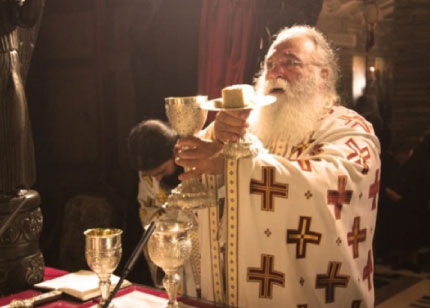
The Anaphora: The Eucharistic Prayer
"Let us lift up our hearts": The central part of the Liturgy begins, where we prepare for the Eucharist. The priest recalls God's saving acts, culminating in Christ’s death and resurrection
Epiclesis: The priest invokes the Holy Spirit to descend upon the bread and wine, transforming them into the Body and Blood of Christ. This mystery is central to Orthodox worship.
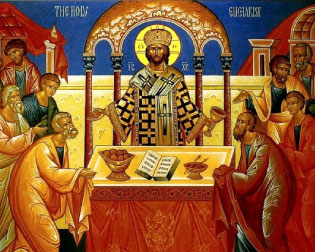
Communion: Receiving Christ
he Lord’s Prayer: Everyone prays the "Our Father," emphasizing unity as children of God.
Preparation for Communion: The priest breaks the consecrated bread and places it in the chalice with the wine. This represents the fullness of Christ’s Body and Blood.
Receiving Communion: The faithful approach to receive the Eucharist on a spoon, symbolizing the unity of Christ’s Body and Blood. Visitors who are not Orthodox may receive a blessing instead.
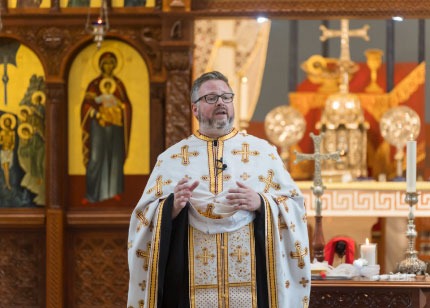
Thanksgiving: Giving Glory to God
Post-Communion Hymns: The congregation sings in gratitude for the gifts received. The priest blesses the congregation with the chalice, signifying Christ's presence.
Dismissal: The priest offers a final blessing, and the congregation is sent forth to live the Gospel in their daily lives.
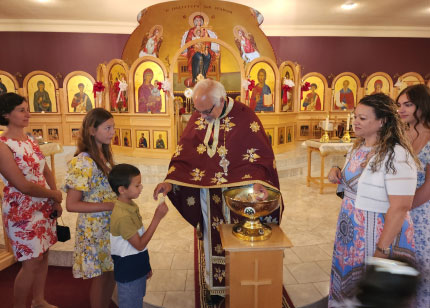
Fellowship After the Liturgy
Antidoron: Non-communicants are welcome to receive blessed bread after the service as a gesture of hospitality and fellowship.
Community: Orthodox Christians often gather after the Liturgy for coffee hour, where visitors can ask questions and experience the Church's warmth.
"It is necessary for each one to approach the Holy Table with great reverence, realizing that he is approaching fire. Though the bread and wine are simple and common by nature, through the invocation and the coming of the Holy Spirit, they become the Body and Blood of Christ."
"The fire of the Holy Spirit, as He descends upon the bread and wine, transforms them into the Body and Blood of Christ, and changes those who partake into divine beings."
"The Eucharist is the mystery that sums up all things, bringing creation into unity with God. Through it, the whole world is sanctified, and man becomes a living temple of the divine presence."

